Jul
30
2021
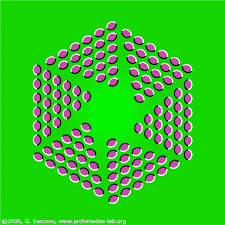
We mostly take our vision for granted. I am not referring to how much we appreciate having good vision, for those who do, but rather we tend to be unaware of how much of a neurological feat simple vision is. In a way, we evolved not to appreciate this – the experience of good vision evolved to be seamless, and to hide all the massive processing necessary to make it so. Neuroscientists, however, have been making a lot of progress reverse engineering how our brains process vision, uncovering new layers of complexity.
A recent study, for example, looked at the persistence of visual images in the brain given dynamic stimuli. How does the brain maintain a constant representation of an object in the world when the image of that object might be dramatically and rapidly changing? Again, we tend to think of our own vision like a video camera, passively recording what is out there. But actually vision is a complex hierarchical constructive process. Imagine, for example, driving in a car. There are other cars on the road, and there are objects on the side of the road you are passing by. The visual image falling on your retina is changing dynamically, and your brain has to keep up with all this change while maintaining a sense of stability.
How much processing power this takes becomes apparent to many people with traumatic brain injury (TBI). This can cause a disrupti0n in the connections among neurons of the brain, slowing down processing speed. People with TBI often experience disorientation when driving, moving quickly, or even turning around. Their brain cannot keep up with the rapidly changing visual input. This is a common symptom because visual processing is one of the most intense that happens in the brain, so it is the first to be affected (the ability to focus and shift attention being another).
Continue Reading »
Jul
29
2021
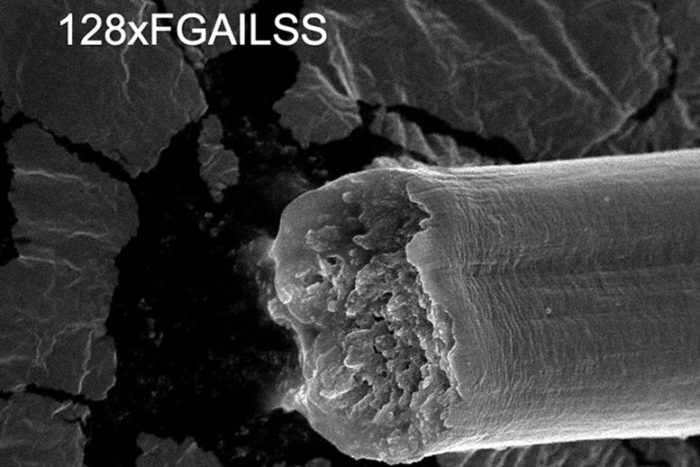 One of the goals of material science is to create a super-strong fiber which can be easily mass produced at arbitrary length. Such fibers would be incredibly useful – for rugged clothing and gear, armor, strong cables, and manufacturing. The ultimate threshold is a cable with enough tensile strength to make a space elevator on Earth feasible. Right now we do not have a material that can do this (whether or not we would want to is a separate question).
One of the goals of material science is to create a super-strong fiber which can be easily mass produced at arbitrary length. Such fibers would be incredibly useful – for rugged clothing and gear, armor, strong cables, and manufacturing. The ultimate threshold is a cable with enough tensile strength to make a space elevator on Earth feasible. Right now we do not have a material that can do this (whether or not we would want to is a separate question).
For decades some researchers have been chasing synthetic spider silk. Some spider silks have incredible strength and toughness, but it has been challenging to duplicate the proteins with the proper structure. Now a team has produced what is perhaps a viable product – a Microbially Synthesized Polymeric Amyloid Fiber. The fibers are produced by a genetically engineered bacterium. Spider silk proteins form a large number of β-nanocrystal structures, which are largely responsible for their strength. Prior attempts at creating synthetic spider silk resulted in lower numbers of β-nanocrystals, and therefore inferior properties.
The new strategy in this current study was to create a hybrid protein, adding in amyloid protein sequences. Amyloid is a protein that likes to form similar structures, and the combination proved to be useful. The resulting protein formed large numbers of β-nanocrystals, creating a fiber that is stronger than some spider silks. How strong?
There are two main properties of interest. The first is tensile strength, which is the ability to resist being pulled apart, and described usually as the “ultimate tensile strength” which is the force necessary to essentially snap a fiber by being pulled apart. Because steel is so ubiquitous and is iconic for its strength, materials are often compared to steel. Of course, there are thousands of alloys of steel, but generally those used in cables have an ultimate tensile strength somewhere between 400-550 megapascals (MPa). The new synthetic fiber has a tensile strength of “0.98 ± 0.08 GPa” – or about 1,000 MPa, about twice the tensile strength of steel.
Continue Reading »
Jul
27
2021
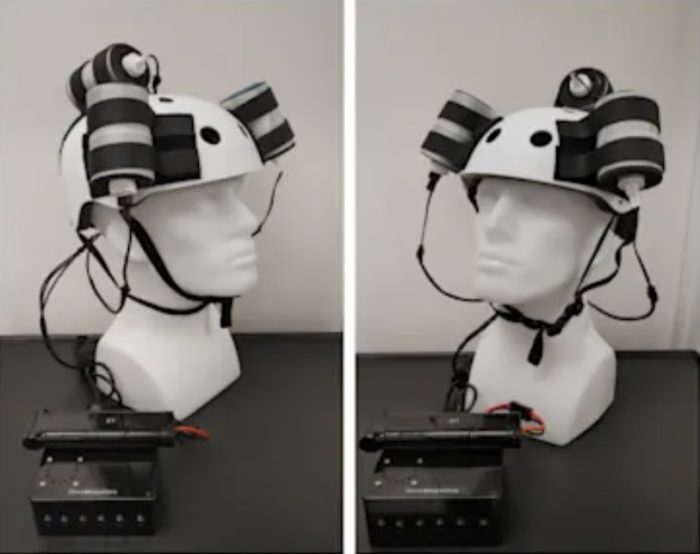 Magnets for healing have a bad rap, one they rightfully deserve. Magnetic snake-oil devices with all sorts of bogus medical claims are as old as magnets themselves. It may have something to do with the fact that magnets seem like magic, exerting and invisible force at a distance. So it’s often an easy sell. Also, magnets are real and do produce a real energy field (unlike the non-existent “life energy” fields common in alternative medicine). So it makes any claims for them seem all the more plausible.
Magnets for healing have a bad rap, one they rightfully deserve. Magnetic snake-oil devices with all sorts of bogus medical claims are as old as magnets themselves. It may have something to do with the fact that magnets seem like magic, exerting and invisible force at a distance. So it’s often an easy sell. Also, magnets are real and do produce a real energy field (unlike the non-existent “life energy” fields common in alternative medicine). So it makes any claims for them seem all the more plausible.
Because of this, magnets do have real medical applications. Perhaps most common is MRI scans – magnetic resonance imaging. But also there is a lot of research into TMS, transcranial magnetic stimulation, for a variety of neurological indications. Our bodies are electromagnetic devices, and we can alter cell function with electricity and magnetic fields. The trick is, applying them in such a way that they can be exploited for benefit rather than causing harm or having no real effect.
For the consumer with insufficient scientific or medical background, it can be very challenging to tell the difference between a legitimate magnetic medical device and a scam. One good rule of thumb – if the magnet is fairly weak (refrigerator magnet level) it is probably worthless. Real biologically active magnets tend to be powerful. Another slightly more technical fact is that biologically active magnets tend to have an alternating field, while magnetic quack devices tend to have a static magnetic field (which has little biological effect).
Continue Reading »
Jul
26
2021
 Mark Zuckerberg has revealed that he plans to transition Facebook from a social media company to one that build and manages an immersive virtual reality “metaverse”. The idea sounds a lot like Oasis from Ready Player One. The term itself was coined in the 1992 science fiction novel, Snow Crash, by Neal Stephenson. The basic idea is of a joining of physical, virtual, and augmented reality into one seamless experience.
Mark Zuckerberg has revealed that he plans to transition Facebook from a social media company to one that build and manages an immersive virtual reality “metaverse”. The idea sounds a lot like Oasis from Ready Player One. The term itself was coined in the 1992 science fiction novel, Snow Crash, by Neal Stephenson. The basic idea is of a joining of physical, virtual, and augmented reality into one seamless experience.
It’s an ambitious goal, but given that Facebook is worth about $280 billion, with income of about $29 billion a year, it’s probably more than an empty boast. Facebook has already acquired Oculus, a popular brand of VR headsets, and has been building the infrastructure necessary for such a project. Zuckerberg seems serious. I think something like the metaverse was inevitable, but the question is – is the technology ready?
Right now the VR (virtual reality) market is about $5 billion per year, but projected to grow to $12 billion by 2024. We are still in the early adopter phase (meaning mostly gaming), but transitioning fairly quickly to more mainstream adoption. The Metaverse might be the killer app that pushes VR over the line. Or it make spectacularly fail, indicating that VR is not ready yet. Zuckerberg, however, is wisely hedging his bets. He indicates that the metaverse will exist in VR, AR (augmented reality), and existing desktop and portable platforms. So you won’t need a VR headset to access the metaverse, you can do it over your phone or sitting at your laptop. But if you have VR you will have a much more immersive experience, and perhaps be able to access unique VR features.
Continue Reading »
Jul
23
2021
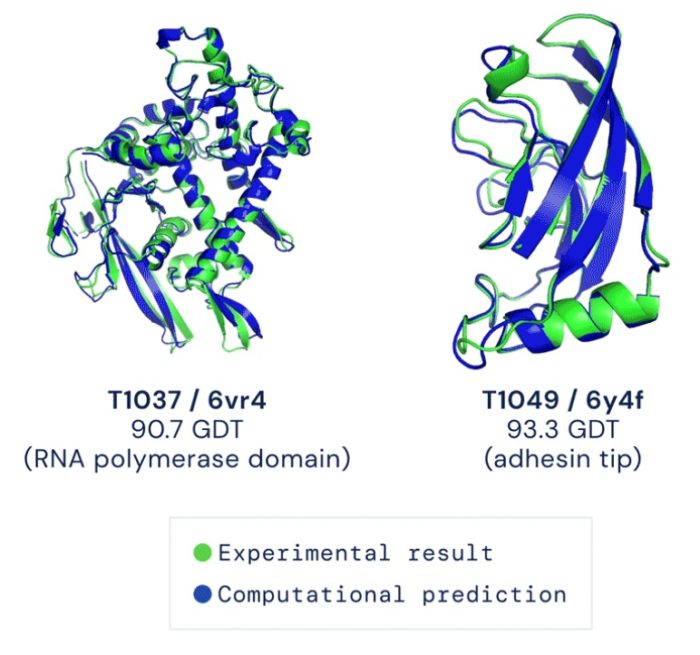 In 2003 the largest ever international cooperative scientific project was completed, at a cost of about $1 billion – the mapping of the human genome. This came with much fanfare, with the media hyping all the medical benefits that would soon flow. Of course, basic science progress often precedes clinical applications by decades, so the hype was not necessarily wrong, just premature. But it was an immediate boon to research, and those benefits are being felt today.
In 2003 the largest ever international cooperative scientific project was completed, at a cost of about $1 billion – the mapping of the human genome. This came with much fanfare, with the media hyping all the medical benefits that would soon flow. Of course, basic science progress often precedes clinical applications by decades, so the hype was not necessarily wrong, just premature. But it was an immediate boon to research, and those benefits are being felt today.
Perhaps the next big mapping project in biology is the human proteome, the characterization of every human protein. (I’ll also give a nod to the connectome project, the mapping of every connection in the human brain, but that will likely take much longer.) A new study published in Nature announces a significant leap forward in mapping the human proteome, using artificial intelligence (AI), specifically AlphaFold2 developed by DeepMind. To understand what they accomplished, however, we need to go over some basic concepts and terminology.
A gene is essentially a code for a sequence of amino acids, which make up proteins. So if we have mapped the entire sequence of bases (of which there are four – GATC) in a gene, we know the sequence of amino acids in the protein it codes for. So then, you might ask, if we have already mapped all the human genes, why is that not the same thing as a map of all the human proteins? This is because a protein is more than just a sequence of amino acids. A short chain of 2 or more amino acids is called a peptide, and a long chain is therefore a polypeptide. But we still don’t have a protein. A protein is a polypeptide that folds itself into a specific three-dimensional structure. It is that three-dimensional structure which determined the function and properties of the protein.
Continue Reading »
Jul
22
2021
 When it comes to cars, the technology competition between batteries and hydrogen has been won. The future of cars appears to be battery technology. There are some hydrogen-fueled cars, but they are a tiny slice of the market. The bottom line is that batteries are more efficient than hydrogen, and they are only going to get better. Volkwagen pretty much declared a victor with this statement:
When it comes to cars, the technology competition between batteries and hydrogen has been won. The future of cars appears to be battery technology. There are some hydrogen-fueled cars, but they are a tiny slice of the market. The bottom line is that batteries are more efficient than hydrogen, and they are only going to get better. Volkwagen pretty much declared a victor with this statement:
“The conclusion is clear” said the company. “In the case of the passenger car, everything speaks in favour of the battery and practically nothing speaks in favour of hydrogen.”
But the key phrase there is “in the case of the passenger car.” Hydrogen may still find a niche when it comes to other types of vehicles, such as trucks or trains. White battery technology has the advantage in efficiency (the total percentage of energy that get transferred to momentum), hydrogen has other advantages. One is that hydrogen (being the lightest element) has a very high specific energy (energy per mass). The specific energy for hydrogen is three times that of jet fuel, and more than 200 times that of current lithium-ion batteries.
In fact, hydrogen has the highest specific energy of any practical fuel. The two recent commercial suborbital flights, by Virgin Galactic and Blue Origin, both used hydrogen fuel, which combines with oxygen to form water, and no CO2. Hydrogen is likely to be the fuel of spaceflight for the foreseeable future (until we perfect nuclear engines, but that’s another article). So for anything that needs to fly, where weight is the primary concern, hydrogen is a great fuel.
Continue Reading »
Jul
20
2021
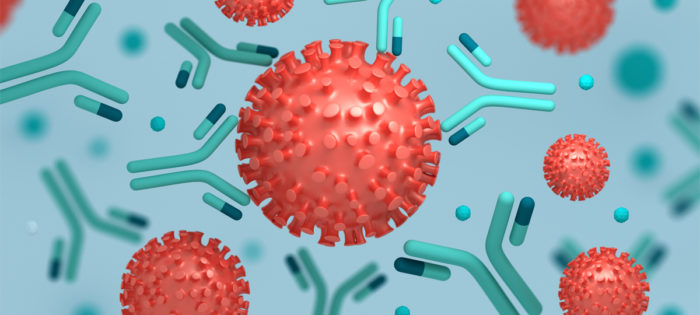 In February on SBM I wrote about the Race Against Vaccine Hesitancy. At that point in time the pandemic was receding in the US in the face of a rapid vaccination program, but also the first new variants of SARS-CoV-2 were starting to appear. Essentially I argued that we were in a race between achieving herd immunity and the spread of new variants that might be more contagious or even vaccine resistant. Experts believed that we would know the answer by Summer.
In February on SBM I wrote about the Race Against Vaccine Hesitancy. At that point in time the pandemic was receding in the US in the face of a rapid vaccination program, but also the first new variants of SARS-CoV-2 were starting to appear. Essentially I argued that we were in a race between achieving herd immunity and the spread of new variants that might be more contagious or even vaccine resistant. Experts believed that we would know the answer by Summer.
Well, Summer is here, and the answer is in. We lost the race. Vaccine hesitancy won.
This doesn’t mean that the vaccination program has not been massively helpful. It has. As of now 48.6% of the US population is fully vaccinated, with 56.1% having received at least one dose. This includes children under 12, however, who are not currently eligible for any vaccine. A total of 68.3% of adults have been vaccinated, close to the 70% goal set by the Biden administration. From a logistical perspective, this is a success. The program peaked at over 3 million doses given per day. The program meant that the limiting factor was not the availability of vaccines or the ability to distribute and administer them. The limiting factor is people willing to get vaccinated.
While we may have come close, we did not achieve sufficient herd immunity. Part of the problem is that the vaccinated are not evenly distributed throughout the population. Vaccine uptake is patchy, which means there are clusters of unvaccinated people where the virus is free to spread. Arkansas, for example, is only at 35% fully vaccinated.
Continue Reading »
Jul
19
2021
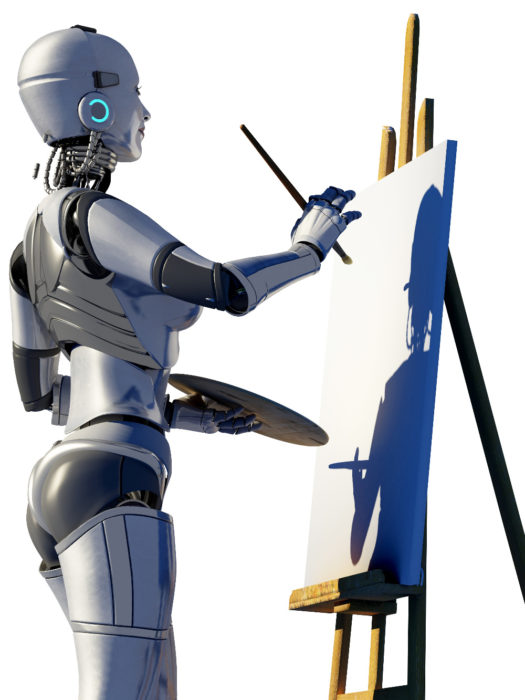
Artificial intelligence (AI) has made tremendous strides in the last few decades. Every time someone comes up with something an AI can’t do, someone builds a system that can do it (eventually). At first experts believed that no AI could beat a chess master in chess, now no human has any chance against the best chess algorithms. The skepticism then moved onto the game “Go” which was thought to require too much creativity and flexibility. In a typical chess match a player may have 20 moves available to them, while in a Go match the number of available moves is more like 200. However, South Korean Go master Lee De-Sol recently retired from competition because the AI AlphaGo “cannot be defeated”.
The primary reason AI capability has been so underestimated is because we naively assumed that any AI would need to accomplish a task is a manner similar to humans. So if we use a conscious thought process, an AI would have to use a similar process. And without human-level sentience things like playing chess or Go would simply not be possible. But this assumption was wrong. Programmers were able to leverage the strength of modern computers and software to duplicate and even surpass these high-level cognitive tasks, while bypassing the need for human-like sentience. It’s possible, therefore, that we may never need to develop self-aware AI. It can do what we need without it.
However, there are still some cognitive abilities that AIs lack that defenders of biological superiority may still point to, such as imagination. AIs typically needs to be trained on lots of data. Humans are particularly good as categorizing and extrapolating using imagination. For example, a child may experience a couple of dog breeds, and when confronting a new and very different dog breed seem to have no difficulty understanding that it’s still a dog. Whereas if they encounter a cat they know it’s not a dog.
Continue Reading »
Jul
16
2021
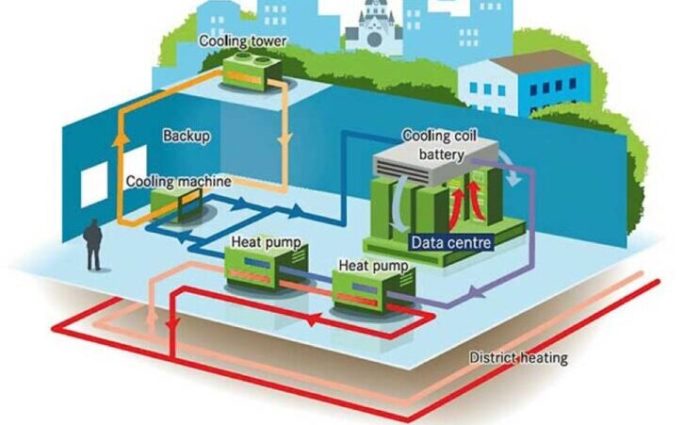 About 70% of all energy produced in the world is wasted as heat. That’s a pretty startling figure. This heat largely just dissipates into the environment, without doing anything useful. If we could reduce that waste to 40% then we could reduce our energy production needs by half. Imagine removing the least efficient and dirtiest half of our energy production from the system. Of course, this is easier said than done. Waste heat comes with the territory, and is lost all long the system.
About 70% of all energy produced in the world is wasted as heat. That’s a pretty startling figure. This heat largely just dissipates into the environment, without doing anything useful. If we could reduce that waste to 40% then we could reduce our energy production needs by half. Imagine removing the least efficient and dirtiest half of our energy production from the system. Of course, this is easier said than done. Waste heat comes with the territory, and is lost all long the system.
There are lots of ways to reduce waste heat. Many are low tech, in that we can do them now with existing technology. Others are high tech, and would likely require some research and development. Let’s talk about some of the low tech methods first.
One method is to reduce waste heat in the first place, and part of this is simply proper insulation. Adequately insulating building is obvious, and the focus of a lot of attention recently, but this could also mean insulating engines that produce energy so that more of that energy goes to making electricity and less is dissipated to the environment as waste. Another method has even greater potential to recapture waste heat, by diverting it to a useful purpose – heating water or heating homes and other buildings. In regions experiencing cold weather electricity is often produced distantly, producing a lot of waste heat that is just shunted into the environment. That electricity is then sent to buildings that use it to produce more heat. But what if waste heat from electricity production could be used to directly heat buildings? That could be a massive savings.
Continue Reading »
Jul
15
2021
 Enceladus is the 6th largest moon of Saturn, about 500 km in diameter. It is completely covered with mostly fresh ice, making it highly reflective (in fact, it is the object in the solar system with the highest albedo, reflecting almost 100% of the light that hits it). Given its small size, astronomers assumed it was likely frozen solid. This small chunk of ice, however, became significantly more interesting in 2005 when Cassini first observed plumes ejecting from its southern pole. This suggested that Enceladus has liquid water beneath that surface crust of ice – and any place with liquid water is a potential candidate location for life.
Enceladus is the 6th largest moon of Saturn, about 500 km in diameter. It is completely covered with mostly fresh ice, making it highly reflective (in fact, it is the object in the solar system with the highest albedo, reflecting almost 100% of the light that hits it). Given its small size, astronomers assumed it was likely frozen solid. This small chunk of ice, however, became significantly more interesting in 2005 when Cassini first observed plumes ejecting from its southern pole. This suggested that Enceladus has liquid water beneath that surface crust of ice – and any place with liquid water is a potential candidate location for life.
Over the next 10 years Cassini made many Enceladus flybies, collecting data that is still being analyzed. NASA now estimates that there is an ocean beneath the southern pole of the moon, below 30-40 km of surface ice, and 10 km deep. Further, analysis of the misty plumes finds that it is salty water with a higher level of organic material than predicted.
Now we have a new analysis of Cassini data looking at the methane content of the Enceladus plumes. Methane is of particular interest to exobiologists looking for telltale signs of life. This is for two good reasons. One is that methane is a highly reactive gas, and will not persist for long in an atmosphere or liquid water. So if it is present in significant amounts it must be being constantly replenished. It shares this feature with oxygen, which is why oxygen is also a significant sign of potential life. Further (and again like oxygen) methane is known to be a byproduct of metabolism of certain kinds of critters. On Earth deep sea vents contain methanogenic archaea, bacteria-like single-celled organisms that live by chemosynthesis.
Continue Reading »


 One of the goals of material science is to create a super-strong fiber which can be easily mass produced at arbitrary length. Such fibers would be incredibly useful – for rugged clothing and gear, armor, strong cables, and manufacturing. The ultimate threshold is a cable with enough tensile strength to make a space elevator on Earth feasible. Right now we do not have a material that can do this (whether or not we would want to is a separate question).
One of the goals of material science is to create a super-strong fiber which can be easily mass produced at arbitrary length. Such fibers would be incredibly useful – for rugged clothing and gear, armor, strong cables, and manufacturing. The ultimate threshold is a cable with enough tensile strength to make a space elevator on Earth feasible. Right now we do not have a material that can do this (whether or not we would want to is a separate question). Magnets for healing have a bad rap,
Magnets for healing have a bad rap,  Mark Zuckerberg has
Mark Zuckerberg has In 2003 the largest ever international cooperative scientific project was completed, at a cost of about $1 billion – the mapping of the human genome. This came with much fanfare, with the media hyping all the medical benefits that would soon flow. Of course, basic science progress often precedes clinical applications by decades, so the hype was not necessarily wrong, just premature. But it was an immediate boon to research, and those benefits are being felt today.
In 2003 the largest ever international cooperative scientific project was completed, at a cost of about $1 billion – the mapping of the human genome. This came with much fanfare, with the media hyping all the medical benefits that would soon flow. Of course, basic science progress often precedes clinical applications by decades, so the hype was not necessarily wrong, just premature. But it was an immediate boon to research, and those benefits are being felt today. When it comes to cars, the technology competition between batteries and hydrogen has been won.
When it comes to cars, the technology competition between batteries and hydrogen has been won.  In February on SBM I wrote about the
In February on SBM I wrote about the
 About
About  Enceladus is the 6th largest moon of Saturn, about 500 km in diameter. It is completely covered with mostly fresh ice, making it highly reflective (in fact, it is the object in the solar system with the highest albedo, reflecting almost 100% of the light that hits it). Given its small size, astronomers assumed it was likely frozen solid. This small chunk of ice, however, became significantly more interesting in 2005 when Cassini first observed plumes ejecting from its southern pole. This suggested that Enceladus has liquid water beneath that surface crust of ice – and any place with liquid water is a potential candidate location for life.
Enceladus is the 6th largest moon of Saturn, about 500 km in diameter. It is completely covered with mostly fresh ice, making it highly reflective (in fact, it is the object in the solar system with the highest albedo, reflecting almost 100% of the light that hits it). Given its small size, astronomers assumed it was likely frozen solid. This small chunk of ice, however, became significantly more interesting in 2005 when Cassini first observed plumes ejecting from its southern pole. This suggested that Enceladus has liquid water beneath that surface crust of ice – and any place with liquid water is a potential candidate location for life.




